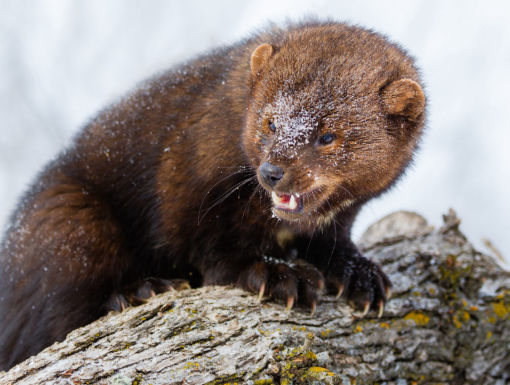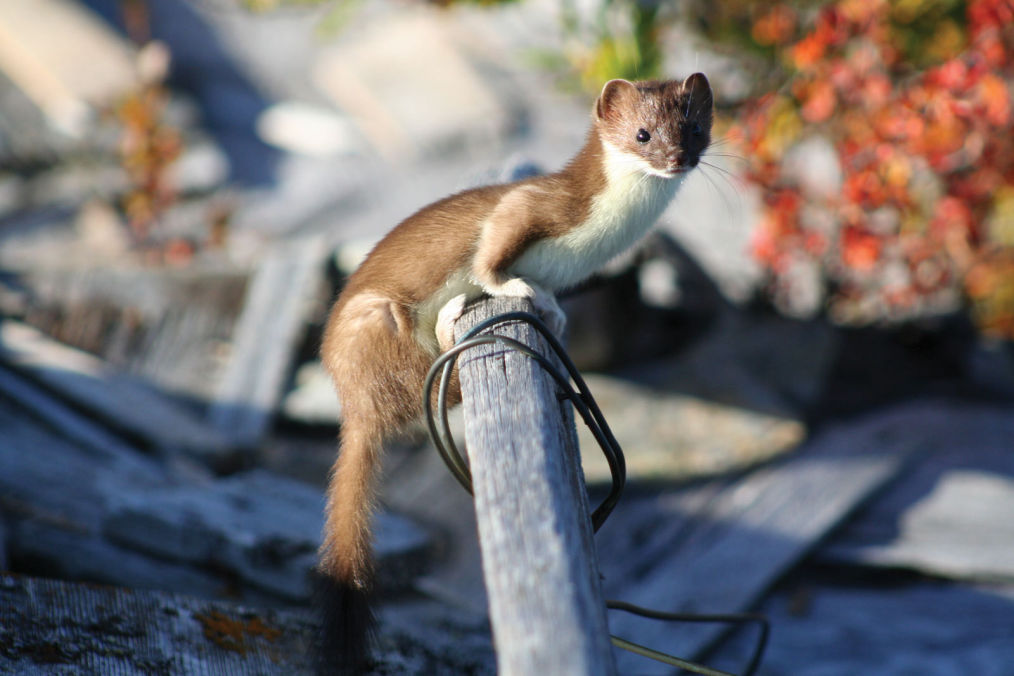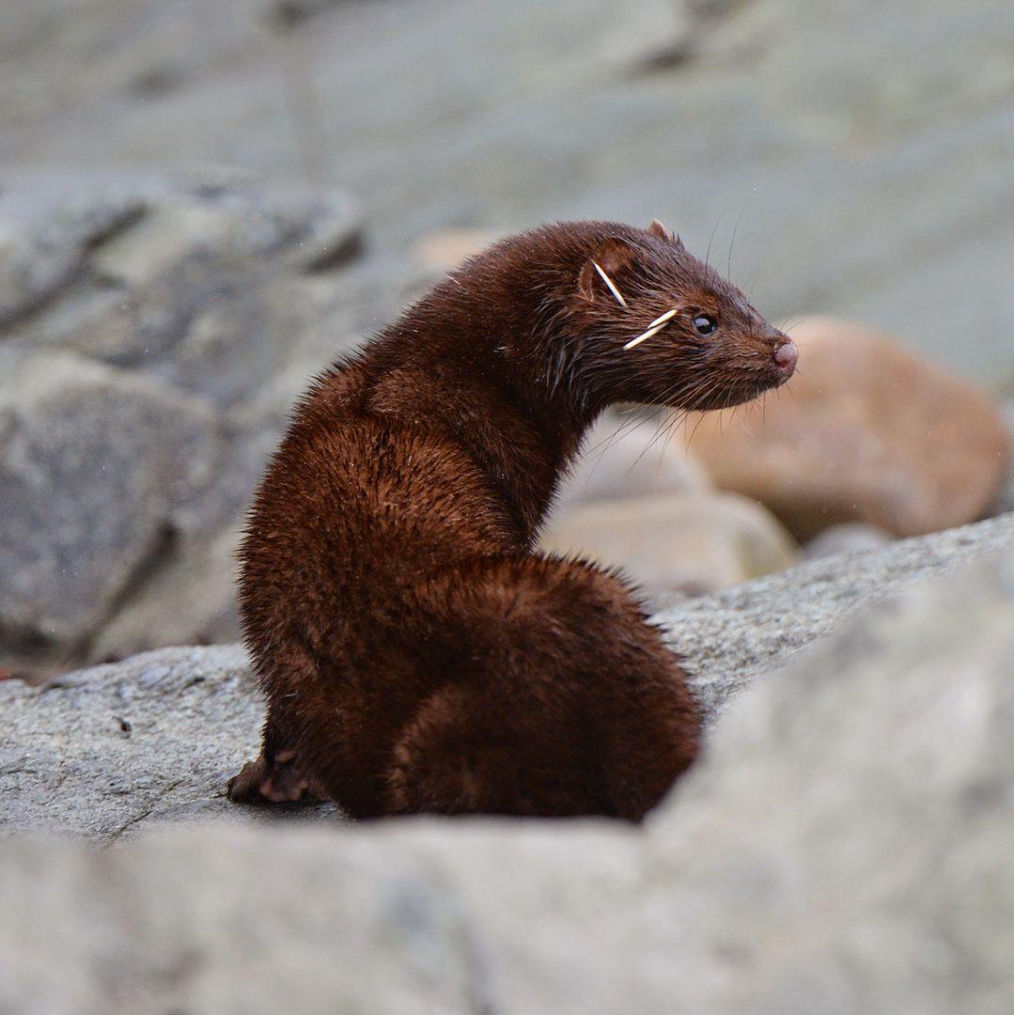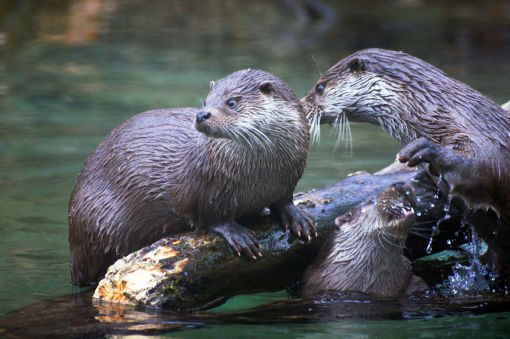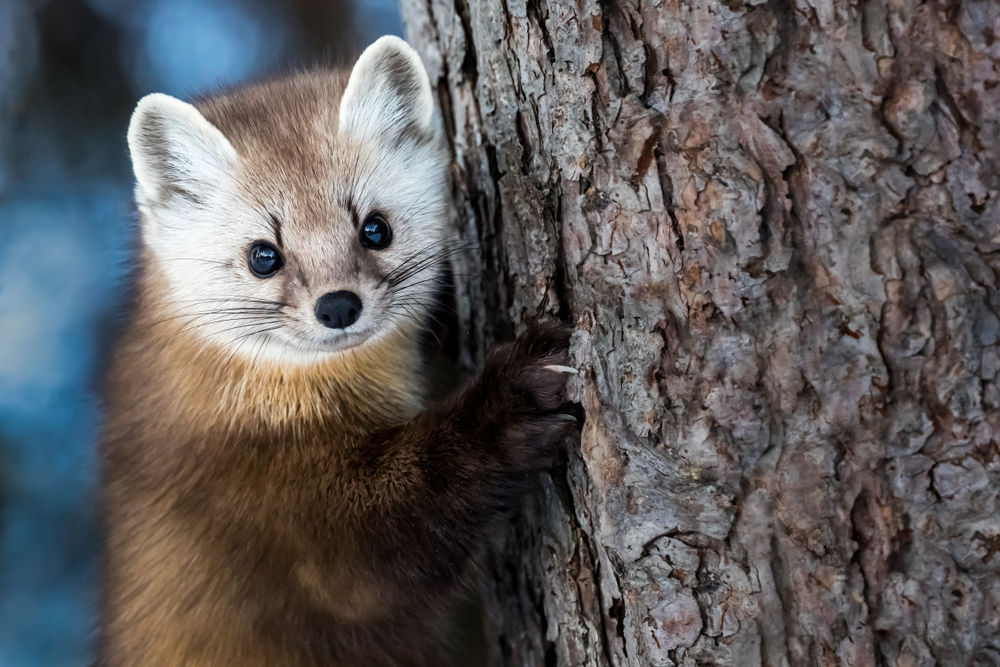
Marten
The American Pine Marten is also known as the American Marten. Their length ranges from 1.5 to 2.2 feet with tail length of 5.4 to 6.4 inches. Adult weight ranges from 1.1 to 3.1 pounds and varies by age and location. They can be both nocturnal or diurnal. They have relatively large rounded ears, short limbs, triangular head and a bushy tail. The fur ranges in color from pale yellowish buff to tawny brown and have a characteristic throat and chest bib.
American marten are opportunistic predators, voles dominate diets throughout their geographic range, though larger prey—particularly snowshoe hares—may be important, particularly in winter. They are also vulnerable to predation from raptors and other carnivores.
American marten host several internal and external parasites, including helminths, fleas, and ticks.
